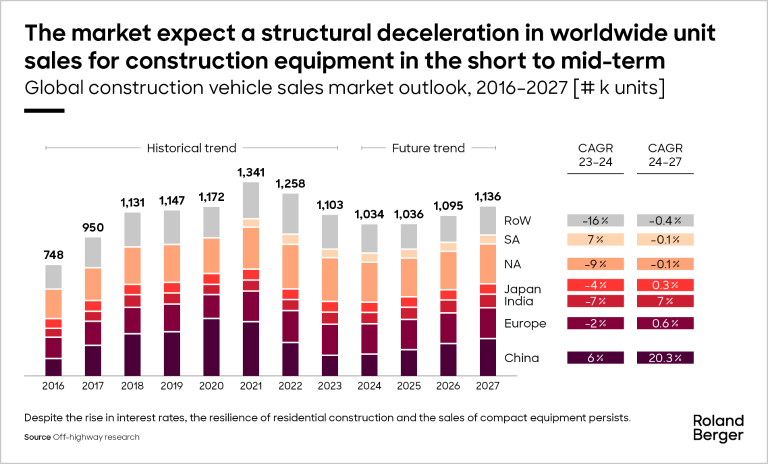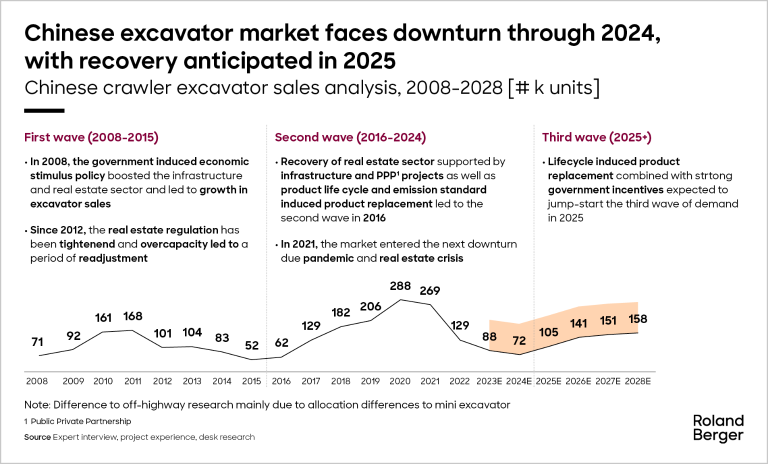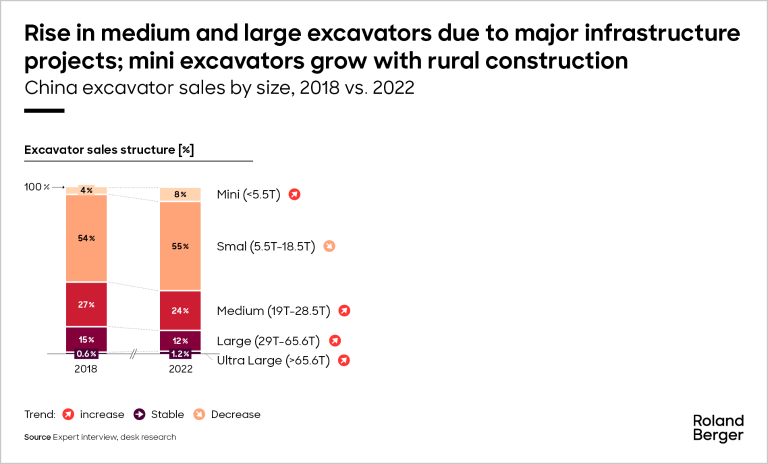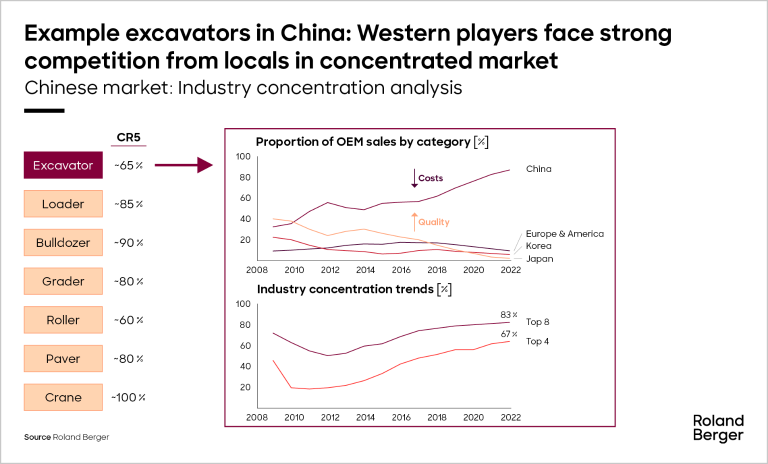Is China still the top choice for multinational companies, or has it lost its appeal as a business market? The answer has significant implications for your success in China.


Navigating the tides: China's off-highway market
A brief outlook on the Chinese construction equipment market and its key trends
In the ever-fluctuating landscape of the global construction equipment market with its dependency on the global economic cycles, industry stakeholders are keenly observing the ongoing deceleration in global construction vehicle volumes. The Chinese off-highway equipment market, with its unique challenges of increasingly strong local players and the opportunity of a projected ‘third wave’ of demand, stands out as a focal point for analysis and strategic planning.

Amidst a period of weak economic growth and a high degree of uncertainty regarding global economic development, the global construction vehicle market faces a strong deceleration. Resulting from the market’s sensitivity to especially residential construction investment climate and higher interest rates, we find, i.e., a decline of the large North American construction vehicle market volume by -9% from 2023 through 2024.
Chinese construction vehicle market defying the headwind
Against this backdrop, the projections for the Chinese construction vehicle market stand out: Despite the cool-down of the Chinese contruction boom and a sharp market deceleration following the Covid pandemic, China’s construction vehicle sales are expected to enter a new business cycle and grow by c.20% through 2027. Especially for excavators, this projected ‘third wave’ of demand – following ‘boom’ waves in 2008-2011 and 2016-2020 – owes its existence to
- A resilient residential construction sector
- Expanding sales of compact equipment mirroring a shift from traditional infrastructure use cases to municipal and farmland
- Recent governmental financial policies, e.g., aggressive issuance of government bond, and
- Large excavator fleets brought into service during the 2016-2020 demand ‘wave’ reaching their replacement age
Resulting from these factors, the important segment of crawler excavators alone is expected to double in market volume from an estimated c.72,000 units p.a. to over 150,000 units p.a. by 2027.
"China's off-highway market is poised for a rebound, demanding strategic foresight from industry leaders."
Despite these optimistic outlooks for the Chinese construction vehicle market, players must strategically consider two major trends shaping the competitive and market landscape: A rising market share of compact equipment and large excavators – accompanied by a significant decline in wheeled loaders – as well as a regionalization and concentration of the competitive landscape.
Mini and large excavators on the rise
Mini excavators feature an operating weight of below c.5.5 t, small dimensions, and high agility to operate in restricted spaces, i.e., through an articulated joint at the base of their excavation boom. This results in high versatility, especially in municipal and farmland use cases. The Chinese mini excavator market doubled its share on the overall excavator market from 4% in 2018 to 8% in 2022 and is set to experience further rapid growth, driven by rural constructions and a shift away from “traditional” infrastructure use cases.
On the other end of the scale, the share of medium and especially large excavators is set to rise. Medium and large excavators feature operating weights beyond c.19 t and c.29 t respectively. Large excavators feature superior economics in medium to large-sized projects. Despite loss in excavator market share – C.43% in 2018 vs. c.37% in 2022 – the Chinese medium and large excavator market is set to experience tailwinds as demand from efficient infrastructure and also large-scale mining projects is anticipated to increase gradually.
"Facing increasingly stiff competition, players on the Chinese off-highway market need a comprehensive strategy considering supply chain setup and local product portfolio optimization."
Fierce, concentrated local competition
The competitive landscape within the Chinese market is also undergoing significant changes. The Chinese excavator market saw a decade of significant market concentration, with the top-4 players steadily increasing their joint market share from below 30% in 2012 to above 65% in 2022. For bulldozers, graders, and pavers, concentration rates are even more significant, and the crane market is almost entirely covered by the top-5 OEMs. With a high market concentration rate, Western players face stiff competition from local brands, which have been gaining ground in terms of cost and quality and, i.e., now represent four of the five top players in the excavator market. The "Matthew effect" of accumulated advantage is evident, with leading companies leveraging their brand strength, product, and service scale advantages to fortify their superior position even more, building barriers against new entrants.
The shift in the competitive landscape necessitates a nuanced approach to maintain a competitive edge – not only for the Chinese, but also for home markets: As Chinese OEMs and suppliers expand their reach beyond domestic borders, the need for a comprehensive China strategy that addresses supply chain setup, local product portfolio optimization, and strategies to safeguard home markets becomes increasingly critical.
China’s off-highway market: Promising, but turbulent
In conclusion, the off-highway market outlook for China is a complex tapestry of market dynamics, competitive pressures, and strategic imperatives. As the industry navigates through these turbulent waters, the insights serve as a valuable compass, guiding stakeholders towards informed decision-making and strategic positioning in the face of global shifts.











